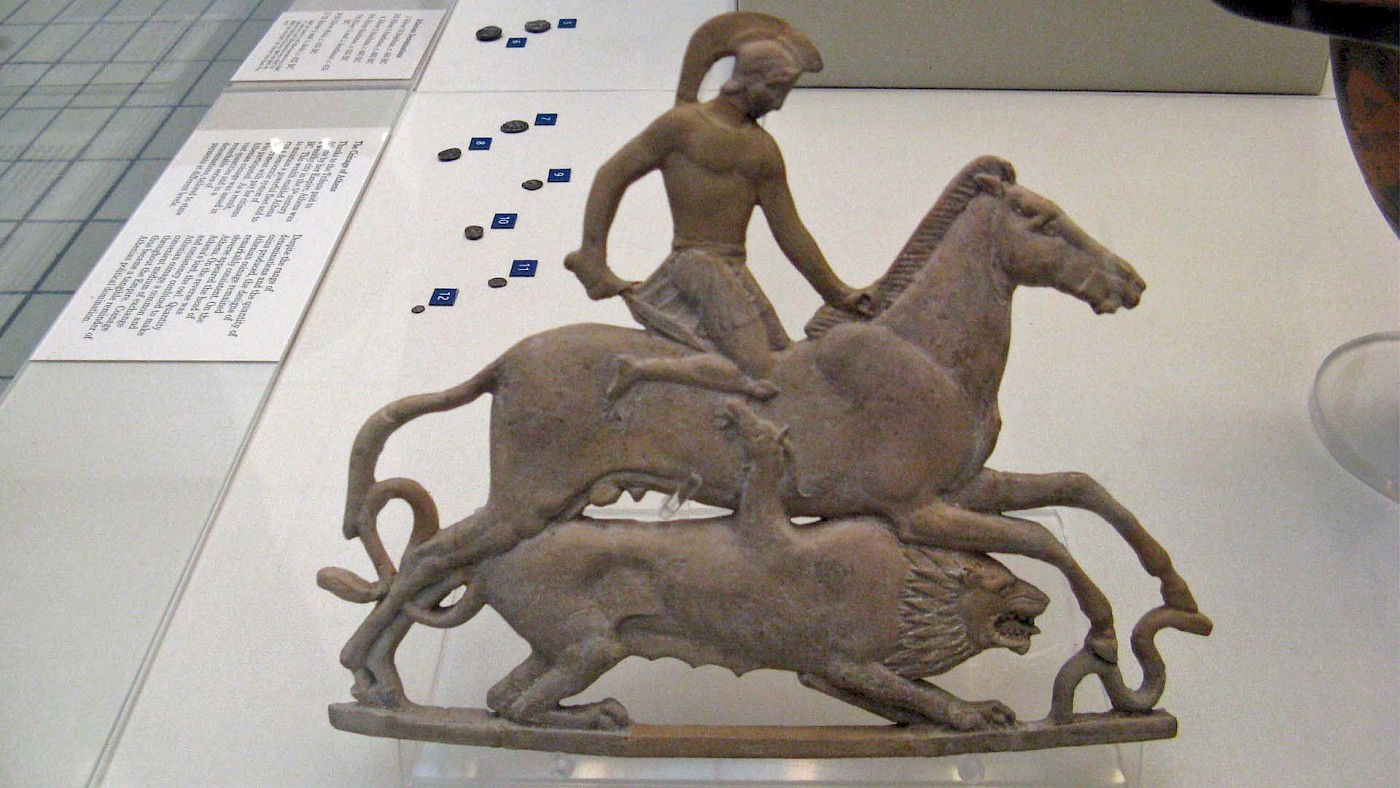If you look up, you’ll see a picture I took at the British Museum. It’s a terracotta plaque from Melos, dated ca. 450 BC. Plaques like this – which could also be made of ivory instead of clay – were used to decorate wooden chests. The scene is immediately recognizable as Bellerophon, mounted on Pegasus, fighting the Chimera.
The Chimera is depicted in the same way as in the Etruscan statue discussed last month, a lion with a serpent for a tail and the head of a goat sprouting from the back. She’s essentially chaos made flesh, and Bellerophon rides into battle to ensure that order will triumph.
But if you look closely at Pegasus, there’s something missing. In most depictions of this flying horse, Pegasus is fitted with the wings of a bird. Here, however, the wings are missing. Perhaps the artist felt that it would be too difficult to depict the horse with wings, since those would likely have obscured either the rider or the monster.
The plaque was used to decorate an object. Riders and fabulous creatures were common decorative motifs in Greece from at least the Archaic period onwards. For example, below is a terracotta revetment, which once decorated a building (probably a temple), from the Allard Pierson Museum in Amsterdam.

Griffins are fabulous animals originally from the Near East. They first show up on Aegean-made artefacts in the Late Bronze Age. Combinations of human figures, riding or otherwise, and wild or fabulous creatures are also common in art throughout the ancient Near East, and the Greeks no doubt were originally inspired by these examples before adopting such scenes and making them their own.
